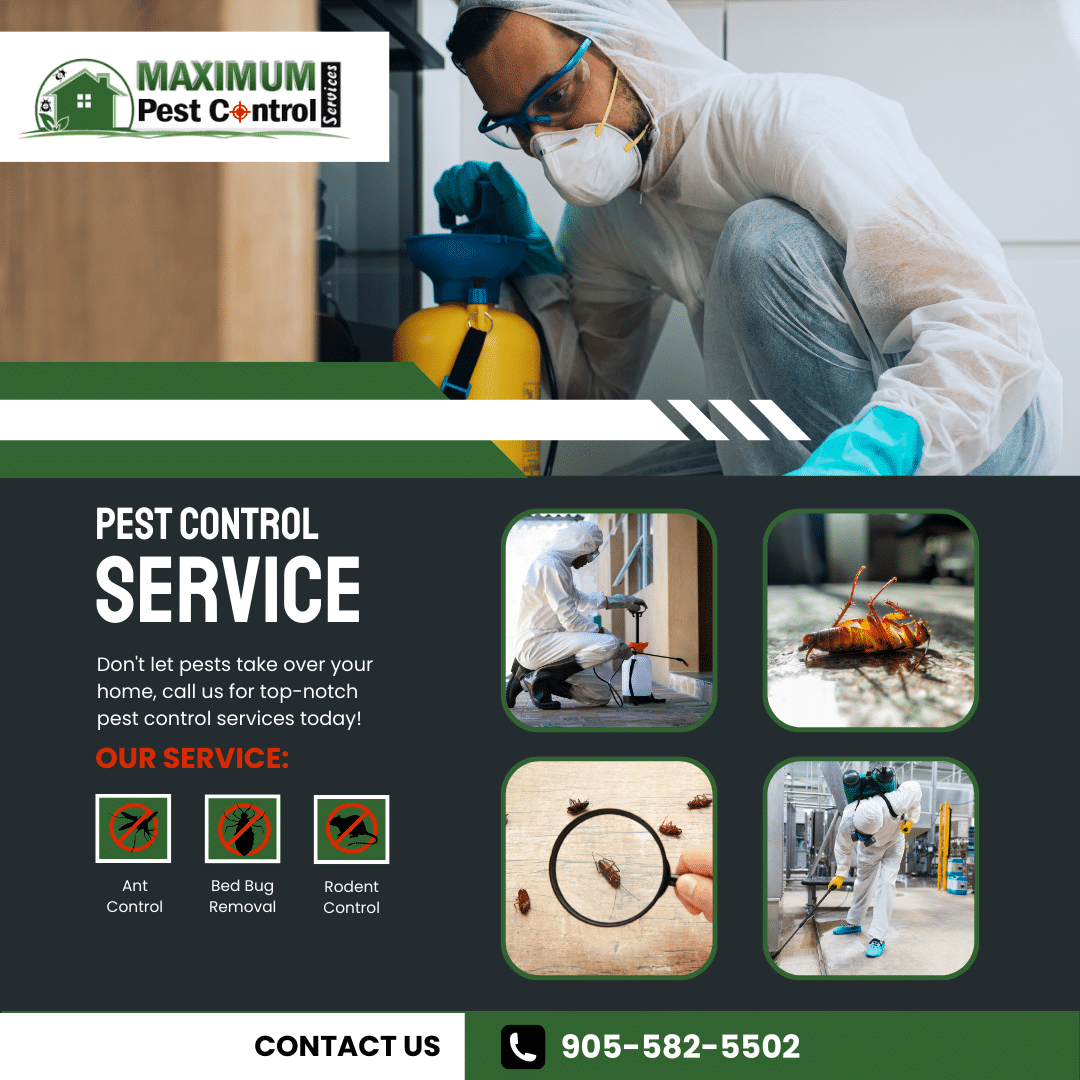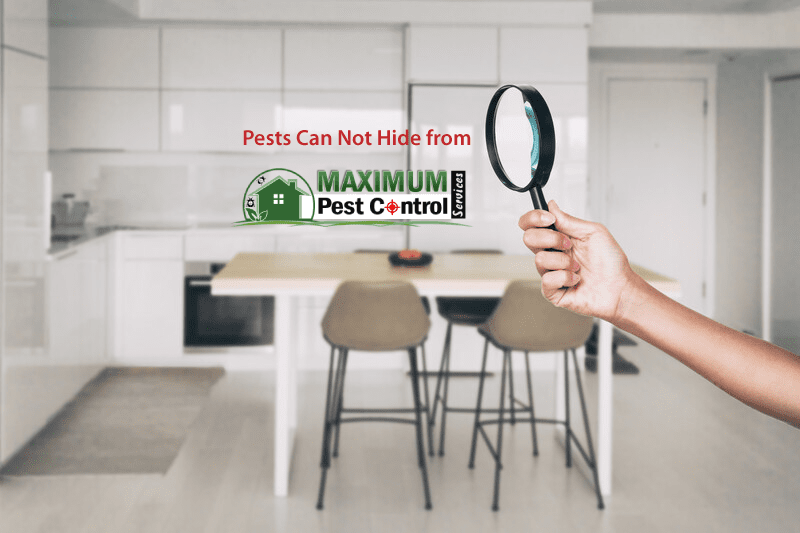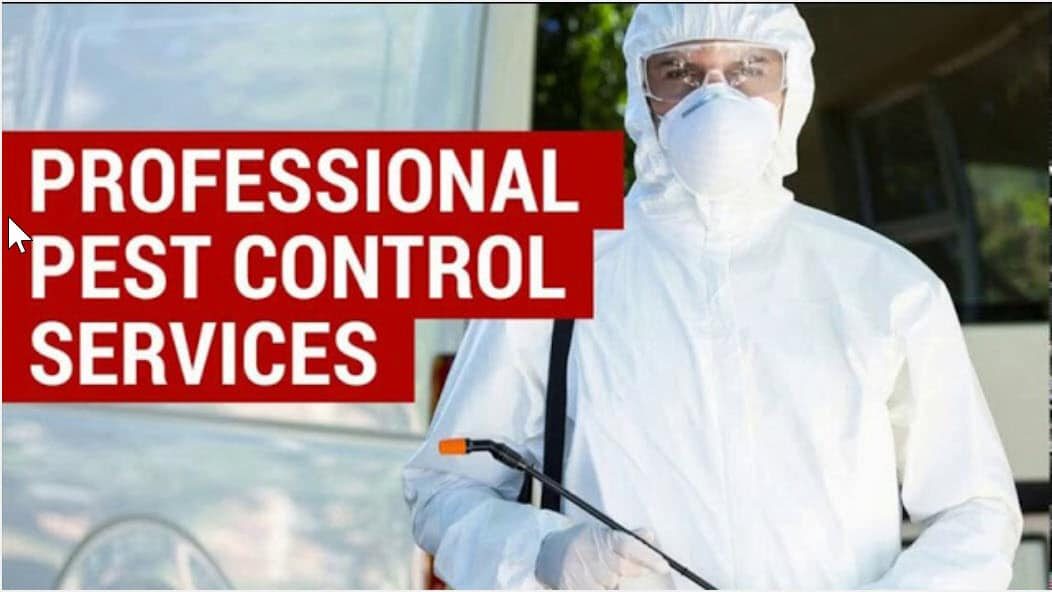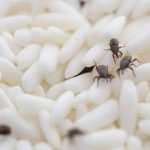
Effective Strategies to Avoid Pest Infestations in Healthcare Facilities
Keep pest infestation from your healthcare facility pest-free with Maximum Pest Control Services. Our effective strategies and professional team can prevent and eliminate any pest infestation. Contact us today (905) 582-5502 for reliable pest control services for home or business.
Did you know that pests like cockroaches can carry and spread over 30 different bacteria, causing diseases from salmonella to gastroenteritis? These persistent pests thrive in warm, moist environments with access to food sources – exactly the conditions found in healthcare facilities. Allowing an infestation puts already vulnerable patients at heightened risk of acquiring dangerous illnesses and infections. Clearly, prevention is far preferable to dealing with entrenched pest problems.
Maintaining a proactive, integrated approach to pest management is crucial for healthcare facilities to establish truly pest-free conditions. By understanding what draws rodents, insects and other unwanted guests, you can make your facility inhospitable through proven preventive methods. Read on as we dive into specific tactics every healthcare facility should implement.
Recognizing the Risks of Pest infestation in Healthcare Facilities
Pests pose a serious threat in healthcare environments. These unwanted visitors can spread diseases, trigger asthma/allergies. They contaminate surfaces, food areas with droppings, and saliva. Proactive pest management is crucial for protecting vulnerable patients.
Healthcare facilities must stay vigilant about common pests. Rodents, cockroaches, flies can enter through cracks, doors, pipes. They’re attracted to food sources, moisture, warmth found in hospitals. Early detection is key to avoiding full-blown infestations.
An integrated pest management plan is the best approach. Using preventive measures like excellent sanitation and facility maintenance. Monitoring through inspections, traps identifies problems early. Targeted treatments minimize exposure risks for patients and staff alike.
Significant Health Dangers Associated with Pest Infestation
- Disease Transmission – Many pests carry and spread harmful bacteria, viruses, and pathogens that can cause illnesses like salmonellosis, gastroenteritis, and Lyme disease. Their bodies and droppings pose contamination risks.
- Asthma/Allergen Triggers – Pests like cockroaches, rodents, and dust mites produce proteins that are potent allergens and asthma triggers, especially dangerous for children and the elderly.
- Food Contamination – Pests can contaminate food sources through defecation, shedding hair/body parts, and spread of pathogenic microbes, increasing risks of food borne illnesses.
- Injury Hazards – Some pests like rodents may bite, potentially transmitting dangerous infections. Stinging insects pose injury risks for those allergic to their venom’s.
- Facility Damage – Many pests like termites and carpenter ants damage the structural integrity of buildings by burrowing into wood, drywall, and insulation.
Implementing Preventive Measures for Pest Control Infestation
Preventing pests before they become a problem is the most effective way to maintain a safe, pest-free healthcare environment. A proactive integrated pest management (IPM) approach focused on making facilities inhospitable to pests is far preferable to removing an established infestation. Key preventive strategies focus on depriving pests of food, water, shelter and entry points.
- Sanitation: Excellent sanitation is foundational for IPM. Regularly cleaning up spills, properly storing food, and quickly disposing of garbage eliminates sources of food and moisture that attract pests. Maintaining clean environments deprives pests of resources.
- Facility Maintenance: Sealing cracks, repairing holes in walls/floors, and fixing moisture issues like leaks removes potential pest harborage areas. Well-sealed, dry facilities are less appealing to pests seeking shelter and nesting spots.
- Inspection/Monitoring: Routine inspections using pheromone traps and monitoring devices identify potential pest hot spots early before an infestation takes hold. Addressing small issues prevents bigger problems from developing.
- Vegetation Management: Maintaining proper landscaping and eliminating excess vegetation around the facility perimeter prevents pests from establishing nearby external harborage sites to move inwards from.
- Staff Training: Educating staff on good sanitation protocols, how to identify early pest signs, and reporting issues is critical for facility-wide engagement in the preventive IPM approach.
- Vendor Policies: Establishing vendor protocols like inspecting deliveries for stowaways prevents inadvertent introduction of new pests into the facility.
Effective Pest Management Approaches for Healthcare Facilities
Healthcare institutions are required to uphold the strictest safety and hygiene regulations. Pest infestations pose unacceptable risks of disease transmission, contamination, and health hazards. A multi-faceted, proactive approach is required to effectively prevent and manage pest issues in these sensitive environments.
Integrated Pest Management (IPM)
The foundation is an Integrated Pest Management (IPM) program, combining preventive tactics to deprive pests of food, water and shelter. Stringent sanitation, facility maintenance, and staff training create inhospitable conditions. Regular inspections and monitoring catch issues early before they escalate. Targeted, minimal use of pesticides treats specific problems “surgically”.
Professional Pest Management
Working with a qualified commercial pest control provider is crucial. Professionals have advanced training in inspecting for pest conducive conditions, identifying infestations early, and selecting the most effective, least-toxic treatments. Their expertise protects patients, staff and the facility through proper preparation and material application.
Safe and Environmentally Friendly Pest Control Solutions
Responsible providers prioritize low-risk, environmentally-preferable solutions first. These may include heat treatments, exclusion methods like door sweeps/caulking, and EPA-approved botanicals or bio-pesticides. Conventional synthetic pesticides are applied only as a last resort using integrated procedures to minimize exposure and disruption.
Conclusion
Maintaining a pest-free healthcare environment requires continuous diligence. Pests will constantly seek entry, drawn by food sources, warmth, and shelter available inside facilities. Complacency allows gaps in preventive protocols that enable infestations to take hold.
A multi-faceted integrated pest management (IPM) approach provides the comprehensive solution. By implementing stringent sanitation, facility maintenance, monitoring, and staff training – facilities deprive pests of conducive conditions. Quick action on any identified issues prevents escalation.
Working closely with qualified pest management professionals ensures healthcare facilities follow IPM best practices using sustainable, low-risk methods. Their expertise safeguards against infestations through preventive measures while providing rapid response if needed. A collaborative, proactive IPM strategy protects patients and staff safety.






